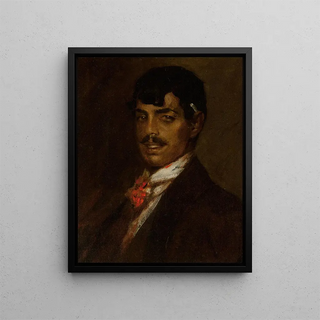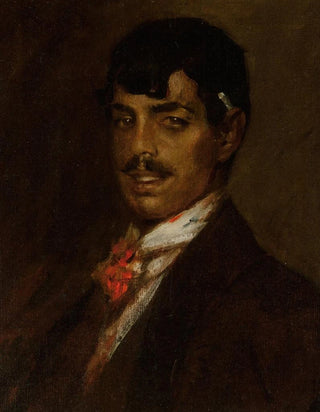Art print | The Spanish Guy - William Merritt Chase


View from behind

Frame (optional)
In the vibrant universe of art, some works transcend time and space, captivating viewers with their beauty and depth. "The Spanish Guy" by William Merritt Chase is undoubtedly one of these creations. Created at the end of the 19th century, this piece embodies both an exploration of identity themes and a celebration of Spanish culture, all while fitting into the American Impressionist movement. The interplay of light, vibrant colors, and fine details offers an unforgettable visual experience, inviting the viewer to immerse themselves in the depicted scene.
Style and uniqueness of the work
William Merritt Chase's style is distinguished by his bold use of color and mastery of light. In "The Spanish Guy," the artist manages to capture the very essence of his subject: a young man dressed in traditional Spanish attire, whose attitude exudes calm confidence. The chosen color palette, oscillating between warm tones and cooler shades, creates a striking contrast that immediately draws the eye. Chase, a true virtuoso, plays with shadows and highlights, providing a depth and dimension to his work that seem almost tangible. The texture of the clothing and the finesse of the model's facial features demonstrate meticulous attention to detail, revealing the artist's undeniable talent. This piece does not merely depict an individual; it tells a story, that of a rich and vibrant culture.
The artist and his influence
William Merritt Chase, born in 1849, is an iconic figure in American art at the end of the 19th century. His artistic journey, marked by European influences and a desire for experimentation, helped shape the landscape of Impressionism in the United States. Chase studied at the Munich Academy of Fine Arts, where he was exposed to the techniques of great European masters, but he developed a personal style that was uniquely his own. As a teacher, he also left an indelible mark on many artists of his generation, passing on his passion for color and light. His work "The Spanish Guy"

Matte finish

View from behind

Frame (optional)
In the vibrant universe of art, some works transcend time and space, captivating viewers with their beauty and depth. "The Spanish Guy" by William Merritt Chase is undoubtedly one of these creations. Created at the end of the 19th century, this piece embodies both an exploration of identity themes and a celebration of Spanish culture, all while fitting into the American Impressionist movement. The interplay of light, vibrant colors, and fine details offers an unforgettable visual experience, inviting the viewer to immerse themselves in the depicted scene.
Style and uniqueness of the work
William Merritt Chase's style is distinguished by his bold use of color and mastery of light. In "The Spanish Guy," the artist manages to capture the very essence of his subject: a young man dressed in traditional Spanish attire, whose attitude exudes calm confidence. The chosen color palette, oscillating between warm tones and cooler shades, creates a striking contrast that immediately draws the eye. Chase, a true virtuoso, plays with shadows and highlights, providing a depth and dimension to his work that seem almost tangible. The texture of the clothing and the finesse of the model's facial features demonstrate meticulous attention to detail, revealing the artist's undeniable talent. This piece does not merely depict an individual; it tells a story, that of a rich and vibrant culture.
The artist and his influence
William Merritt Chase, born in 1849, is an iconic figure in American art at the end of the 19th century. His artistic journey, marked by European influences and a desire for experimentation, helped shape the landscape of Impressionism in the United States. Chase studied at the Munich Academy of Fine Arts, where he was exposed to the techniques of great European masters, but he developed a personal style that was uniquely his own. As a teacher, he also left an indelible mark on many artists of his generation, passing on his passion for color and light. His work "The Spanish Guy"






